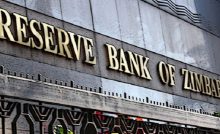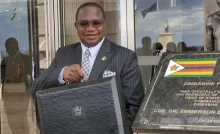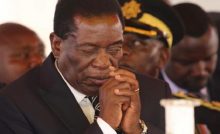Zimbabwe heading in the right direction at last




The Minister of Finance has been following a carefully crafted reform program to restore fiscal and monetary stability within the framework of sound macro-economic conditions.
When he first came into office I warned him that when he walked into his office, that a bucket full of nasty stuff would fall on his head. It was no understatement.
He found that the Reserve Bank was in a complete mess, the government was spending 40 per cent more than they were collecting and all macroeconomic indicators were so far out of kilter that the State was in crisis.
He took immediate steps to stop the bleeding – raising taxes and imposing strict budgetary discipline on all ministries and parastatals.
The result stunned everyone – including the minister. The fiscal deficit vanished and since that time (7 months) we have been running on a surplus over expenditure. The impact was felt throughout the economy – money supply stopped growing and the macroeconomic fundamentals stabilised.
He next stated that the RTGS dollars that everyone was using bore no relation to the US dollar. The informal market reacted with shock and the market rate shot up to 7:1 in a few weeks, forcing up import prices and giving rise to hyperinflation.
He next granted everyone the right to hold any hard currency balances in a special foreign currency account at their banks. Initially people and companies were deeply suspicious of these accounts but slowly they began banking any foreign currency earnings or receipt’s in such accounts.
Today we have about US$700 million in these accounts and this, in some way, encouraged the Government to start the liberalisation process. In the meantime, inflation was reaching hyperinflation levels and this was in turn boosting fiscal revenues and reducing the real value of the mountain of electronic money created before the changes in August 2018.
The next step was to start the process of taking the country towards a more open and market driven economy where the value of the currency in circulation would be established by market forces. The first question people asked was ‘do we have a currency’?
The answer was ‘of course’ – but it was described by economists as ‘RTGS’ dollars. This was in reference to the fact that it was based on an electronic clearance system called the ‘Real Time Gross Settlement’ system. In other words, it was electronic money, backed by nothing except local sentiment.
The other currency was the so called ‘Bond’ notes and coins. Although in limited circulation this was the only local currency available for local transactions.
As with any currency, if you create or print money in excess of transactional needs you automatically reduce its value. This is what has happened to both the RTGS dollar and the Bond notes. By running up a huge fiscal deficit and creating electronic money to fill the gap, we were once again printing money in excess.
The inevitable happened – the currency crashed and everyone thought that we were back in the bad old days when our domestic currency, the Zimbabwe dollar was destroyed and all savings wiped out.
However, this time the situation is quite different in that the minister has forced the government to live within its means and slowly stability and low inflation levels are returning as the fundamentals are addressed.
Continued next page
(862 VIEWS)
Page: 1 2
Recent Posts
Reserve Bank of Zimbabwe expects more foreign currency sellers to join the interbank market
The gazetting into law of the payment of quarterly taxes on a 50-50 basis in…
Zimbabwe 2025 citizens’ budget
Zimbabwe has today unveiled a ZiG276.4 billion budget for 2025 during which it expects the…
To go or not to go- Mnangagwa in a quandary
Zimbabwe President Emmerson Mnangagwa has repeatedly stated that he is not going to contest a…
ZiG loses steam, falls against US dollar for five consecutive days
The Zimbabwe Gold fell against the United States dollar for five consecutive days from Monday…
Indian think tank says Starlink is a wolf in sheep’s clothing
An Indian think tank has described Starlink, a satellite internet service provider which recently entered…
ZiG firms against US dollar for 10 days running but people still do not have confidence in the currency
Zimbabwe’s new currency, the Zimbabwe Gold (ZiG), firmed against the United States dollars for 10…


